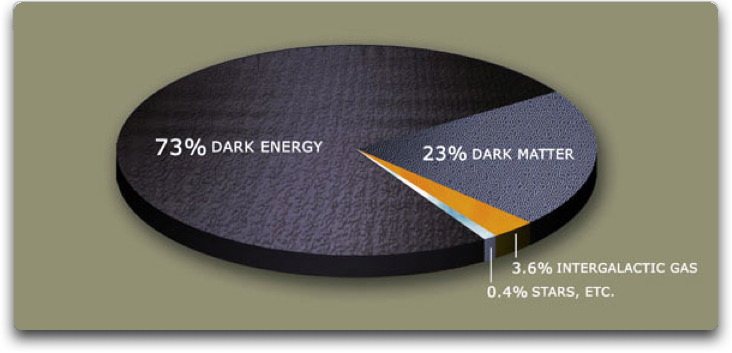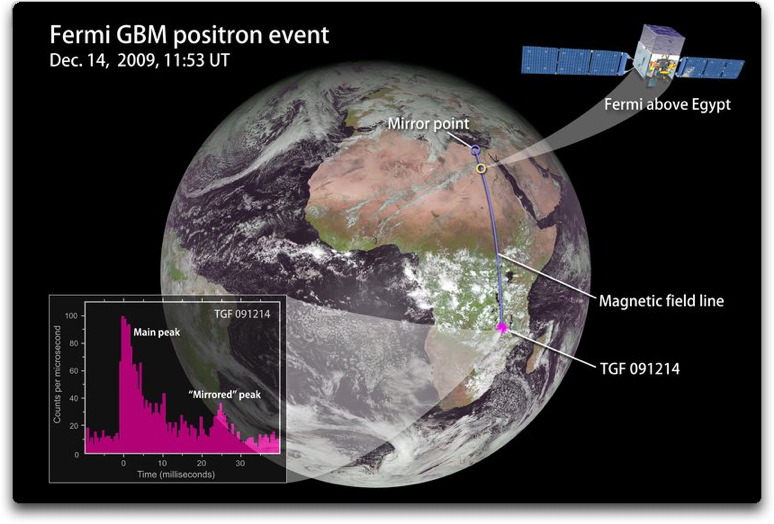However, this claim that the sun could change radioactive decay rates was shortly challenged by a follow-up article at WUWT and then a second follow-up, both of which threw cold water on the idea.
So I was interested to stumble across an announcement issued by Purdue University in August 2012, which strongly confirmed the reality of the phenomenon. Purdue has applied for a patent for the use of this effect as a means to supply advance warning of solar flares.
I found this most interesting, however, not because it affords a chance to have warning of another Carrington Event, although that would be great in itself. Instead, I found it interesting for a curious reason involving the mechanism whereby the sun is able to affect the rate of radioactive decay.
The thing I really like about the mechanism, about the way that the sun is able to influence the rate of radioactive decay, is that we don't have any idea what it is or how it works.
Truly. Nobody has a clue. It was first noticed in 2006, and to date we have no idea how the sun does it. But Purdue says it clearly, repeatably, and demonstrably works. When the sun changes, radioactive substances all over the world change their rate of decay.
There have been years and years of attempts to see if we could artificially change the rate of radioactive decay. Obviously, if you could do that, it would be incredibly useful. But despite experiment after experiment, no one has ever discovered any combination of environmental variables that would change the rate of radioactive decay ... until now, or so it seems at this time.
Now, don't get me wrong here. I don't think that the sun rules the climate, and I'm not discussing the sun for that reason. I'm not one of the "It's the sun, stupid" folks. I don't think any of the forcings rules the climate - not the sun, not CO2, not methane, not volcanoes, none of them.
Instead, I think the earth's temperature is set by interlocking homeostatic mechanisms. These natural and poorly studied emergent phenomena have laughed off the effects of huge meteor strikes, and long-term vulcanism, and a slow rise in the solar output, and kept the earth within a surprisingly narrow temperature range at all scales, from centuries to millions of years. We think nothing of the fact that next year won't be much different from this year ... and yet that stability, of plus or minus one tenth of a percent in the global average surface air temperature variation over the last century, is actually quite surprising and demands explanation.
So I'm not talking about the sun affecting the climate. I bring up this question of the sun affecting the rate of radioactive decay for one reason - to highlight just how much we don't know about this marvelous, mysterious infinity that surrounds us. People talk about Trenberth's famous "missing heat", where he described one of the many parts of climate science that is poorly understood - energy that he says is incoming but can't be found or accounted for.
But given that we seem to have misplaced both the dark energy and the dark matter that make up 96% of the mass of the universe ... well, when you can't find hide nor hair of almost everything the universe contains, that kinda makes not finding a few zetajoules in the climate system pale by comparison ...
Let me take another example. In 2010 it was discovered that thunderstorms function as huge natural particle accelerators. Who knew? Here's a description of the mechanism:
... when particularly intense lightning discharges in thunderstorms coincide with high-energy particles coming in from space (cosmic rays), nature provides the right conditions to form a giant particle accelerator above the thunderclouds.I loved that last bit. Using a giant particle accelerator to affect a satellite? Good science fiction, but utterly outrageous that it's actually happening. One way to recognize emergent behavior is that it is not readily predictable from a knowledge of the conditions. I'd say a thunderstorm suddenly forming a giant particle accelerator that can blast a satellite, well, that would definitely qualify as unexpected and not predictable ... and here's another one.
The cosmic rays strip off electrons from air molecules and these electrons are accelerated upwards by the electric field of the lightning discharge. The free electrons and the lightning electric field then make up a natural particle accelerator.
The accelerated electrons then develop into a narrow particle beam which can propagate from the lowest level of the atmosphere (the troposphere), through the middle atmosphere and into near-Earth space, where the energetic electrons are trapped in the Earth's radiation belt and can eventually cause problems for orbiting satellites.
Thunderstorms give off burst of gamma rays. They found out by accident a few years ago when the gamma ray satellite "Fermi" looked at the Earth. Not only that, but the gamma rays in turn give off bursts of antimatter, which get shot off into outer space ...
I've had no success trying to establish the amount of energy in one of these terrestrial gamma-ray bursts, no clue. But there are about 1,100 of them per day, and although they are short they are very energetic ... so how much energy is lost to space that way?
I find both of these phenomena quite interesting in that they appear, at least, to be a way that the world loses energy to space that is not accounted for in the usual budget. Among other things, we're blasting positrons into space ... go figure.
Remember that the tropical thunderstorms are an emergent phenomenon. They are formed and cluster around the hot spots, so they are removing energy directly where it is needed. As a result, although it may not seem like a lot when it is averaged over the surface of the planet, in the area where it is happening it is very significant.
Here's another way the planet loses energy that's not in the conventional accounting. Consider lightning. My back of the envelope calculations show that at something like 5 billion joules per strike, it accounts for about 0.2 W/m2 of energy averaged over the earth's surface. Some of that is released in the form of heat, and some in the form of light ... and that's where it gets interesting, because something like half of that light will be radiated upwards. You can see it clearly from the space station.
Now, very rough calculations I'm sure someone can improve upon, if light is half the lightning energy and heat is the rest, and half the light escapes to space, that's less than a tenth of a W/m2 ... but again, that's averaged around the globe. The thunderstorms mostly occur in certain areas and certain times where they are needed to cool the surface. And in those areas and times, the loss of energy to space in the form of light could easily reach several watts per square metre.
I bring up all of this stuff because it's unknown, it's stuff we barely understand, or not even that much. But it's hard for me to describe the point I'm trying to get across, so let me give a couple of quotes that may explain it. First, from the famous scientist J. B. S. Haldane:
Not only is the universe stranger than we imagine, it is stranger than we can imagine.I find that greatly encouraging. It means there will always be new things to find out. Like the poet Robert Browning said, "A man's reach should exceed his grasp. Or what's a meta phor?"
Then we have the famous scientist William Shakespeare, who might have been describing the sun affecting radioactive decay when he has Horatio say: :
HORATIOI suspect that eventually we'll figure out just how it is that the sun is able to affect radioactivity, something that we thought could not be affected by anything. Of course, by then there will be some new phenomenon that's just as mysterious.
O day and night, but this is wondrous strange!
HAMLET
And therefore as a stranger give it welcome.
There are more things in heaven and earth, Horatio,
Than are dreamt of in your philosophy.
And in the meantime, as we discover any new and fascinating thing about the climate, it seems to me that we should "as a stranger give it welcome".
My point relates to the famous claim by Gro Harland Bruntland, the chief climate cheerleader for the IPCC, who said:
So what is it that is new today? What is new is that doubt has been eliminated. The report of the International Panel on Climate Change is clear. And so is the Stern report. It is irresponsible, reckless and deeply immoral to question the seriousness of the situation. The time for diagnosis is over. Now it is time to act (Brundtland 2007).Well ... no. Doubt has not been eliminated, nor will it ever be ... and that's great news.
And as for the consensus of more than 97% of scientists, you know, the ones who said that nothing could change the rate of radioactive decay? ...
It's doing about as well as consensus science ever does, meaning it's right until it's wrong, and in neither case does it affect the truth on the ground.
My best to all, keep up the questioning,
w.





if this is true what implications does it have for the radio metric dating system.